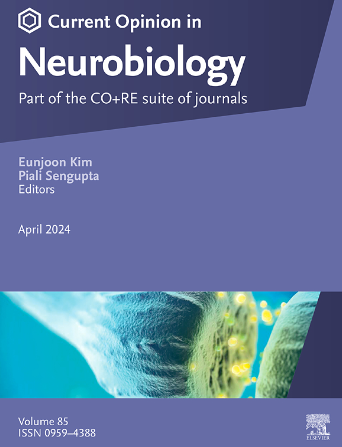推进自闭症研究:来自脑类器官模型的见解
IF 5.2
2区 医学
Q1 NEUROSCIENCES
引用次数: 0
摘要
自闭症谱系障碍(ASD)以多种行为症状和复杂的遗传结构为特征,对理解其病理机制过程提出了重大挑战。尽管进行了广泛的研究,但将遗传变异与与ASD相关的表型结果联系起来的机制仍然难以捉摸。一致的证据表明,自闭症谱系障碍患者的早期大脑发育受到干扰。脑类器官的出现为揭示ASD患者大脑发育的变化提供了一个独特的机会。脑类器官是由多能干细胞衍生的三维体外模型系统,它在多个生物学水平上概括了早期人类大脑的发育。它们已经成为研究人类特定大脑发育过程和神经发育障碍的宝贵工具。在这篇综述中,我们讨论了最近使用脑类器官技术来模拟ASD的发现,并讨论了这些新技术如何在分子、细胞和组织水平上增强我们对ASD遗传学和病理学的理解。本文章由计算机程序翻译,如有差异,请以英文原文为准。
Advancing autism research: Insights from brain organoid modeling
Autism Spectrum Disorders (ASD) are characterized by a variety of behavioral symptoms and a complex genetic architecture, posing significant challenges in understanding the mechanistic processes underlying their pathology. Despite extensive research, the mechanisms linking genetic variations to the phenotypic outcomes associated with ASD remain elusive. Consistent evidence indicates disruptions in early brain development among individuals with ASD. The advent of brain organoids offers a unique opportunity for uncovering, how brain development changes in ASD patients. Brain organoids are three-dimensional in vitro model systems derived from pluripotent stem cells that recapitulate early human brain development across multiple biological levels. They have become an invaluable tool for studying human-specific brain development processes and neurodevelopmental disorders. In this review, we discuss recent findings using brain organoid technologies to model ASD and discuss, how these new technologies can enhance our understanding of ASD genetics and pathology at the molecular, cellular, and tissue levels.
求助全文
通过发布文献求助,成功后即可免费获取论文全文。
去求助
来源期刊

Current Opinion in Neurobiology
医学-神经科学
CiteScore
11.10
自引率
1.80%
发文量
130
审稿时长
4-8 weeks
期刊介绍:
Current Opinion in Neurobiology publishes short annotated reviews by leading experts on recent developments in the field of neurobiology. These experts write short reviews describing recent discoveries in this field (in the past 2-5 years), as well as highlighting select individual papers of particular significance.
The journal is thus an important resource allowing researchers and educators to quickly gain an overview and rich understanding of complex and current issues in the field of Neurobiology. The journal takes a unique and valuable approach in focusing each special issue around a topic of scientific and/or societal interest, and then bringing together leading international experts studying that topic, embracing diverse methodologies and perspectives.
Journal Content: The journal consists of 6 issues per year, covering 8 recurring topics every other year in the following categories:
-Neurobiology of Disease-
Neurobiology of Behavior-
Cellular Neuroscience-
Systems Neuroscience-
Developmental Neuroscience-
Neurobiology of Learning and Plasticity-
Molecular Neuroscience-
Computational Neuroscience
 求助内容:
求助内容: 应助结果提醒方式:
应助结果提醒方式:


